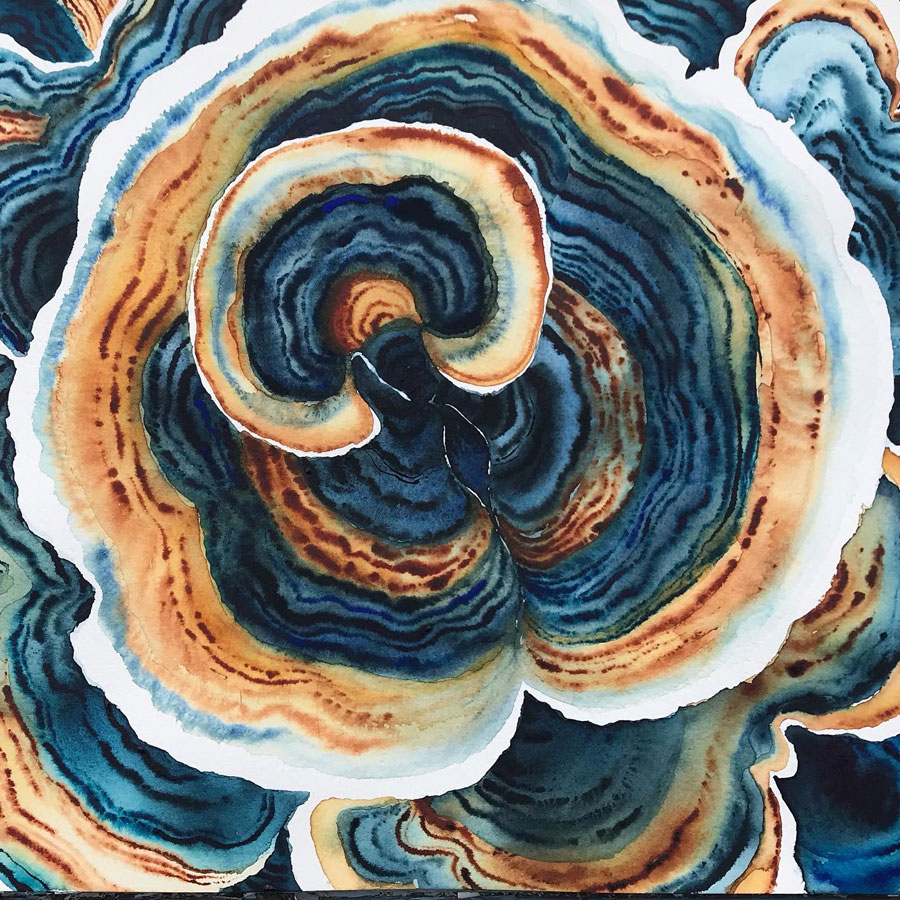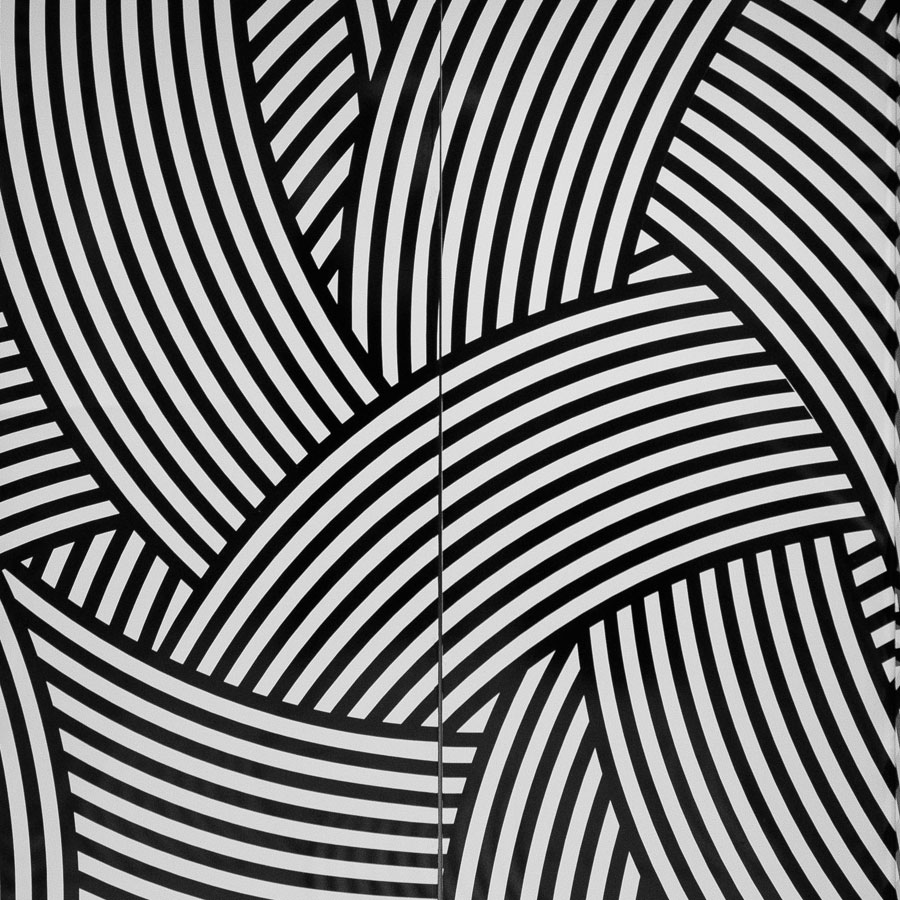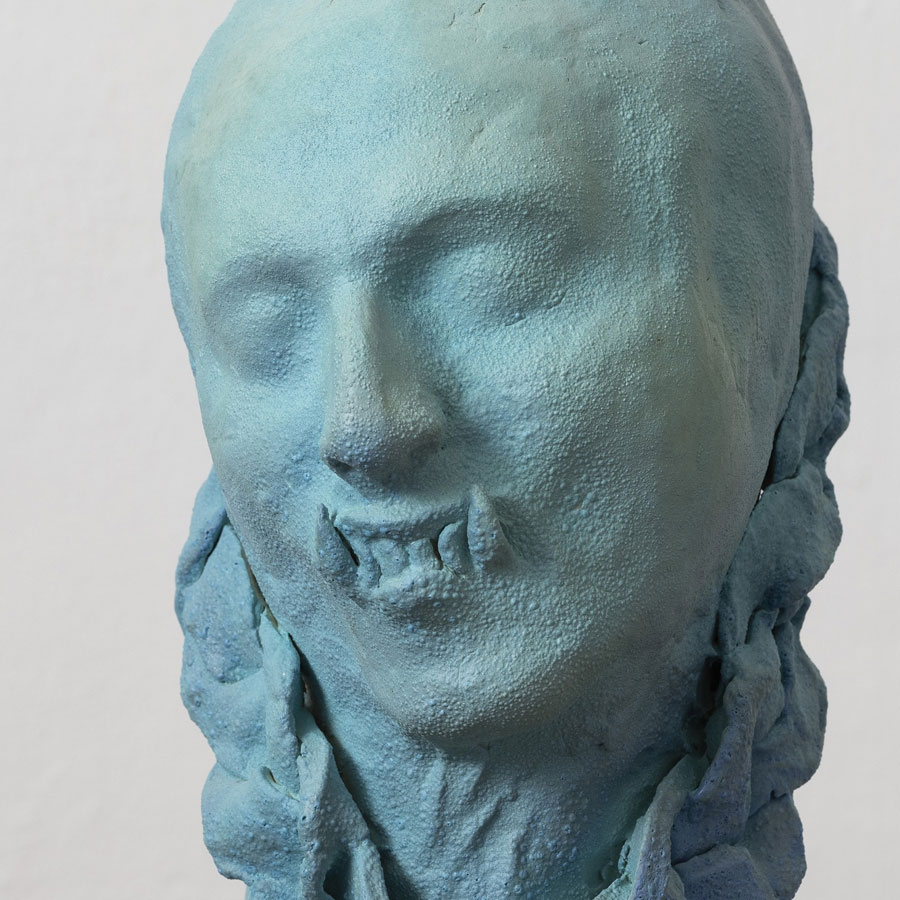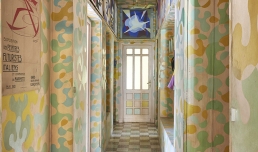Casa BallaFrom the house to the universe and back
galleria 5
curated by Bartolomeo Pietromarchi, Domitilla Dardi
single ticket valid until 17 April, for all ongoing exhibitions, due to the refurbishment of 2 galleries
– for young people aged between 18 and 25 (not yet turned 25);
– for groups of 15 people or more;
– La Galleria Nazionale, Museo Ebraico di Roma ticket holders;
– upon presentation of ID card or badge: Accademia Costume & Moda, Accademia Fotografica, Biblioteche di Roma, Centro Sperimentale di Cinematografia, Enel (for badge holder and accompanying person), FAI Fondo Ambiente Italiano, Feltrinelli, Gruppo FS, IN/ARCH Istituto Nazionale di Architettura, Sapienza Università di Roma, LAZIOcrea, Palazzo delle Esposizioni, Amici di Palazzo Strozzi, Accademia Nazionale di Santa Cecilia, Scuola Internazionale di Comics, Teatro Olimpico, Teatro dell’Opera di Roma, Teatro di Roma, Università degli Studi di Roma Tor Vergata, Youthcard;
– upon presenting at the ticket office a Trenitalia ticket to Rome purchased between 27 November 2024 and 21 April 2025
valid for one year from the date of purchase
– minors under 18 years of age;
– myMAXXI cardholders;
– on your birthday presenting an identity document;
– upon presentation of EU Disability Card holders and or accompanying letter from hosting association/institution for: people with disabilities and accompanying person, people on the autistic spectrum and accompanying person, deaf people, people with cognitive disabilities and complex communication needs and their caregivers, people with serious illnesses and their caregivers, guests of first aid and anti-violence centres and accompanying operators, residents of therapeutic communities and accompanying operators;
– MiC employees;
– journalists who can prove their business activity;
– European Union tour guides and tour guides, licensed (ref. Circular n.20/2016 DG-Museums);
– 1 teacher for every 10 students;
– AMACI members;
– CIMAM International Committee for Museums and Collections of Modern Art members;
– ICOM members;
– from Tuesday to Friday (excluding holidays) European Union students and university researchers in art history and architecture, public fine arts academies (AFAM registered) students and Temple University Rome Campus students;
– IED Istituto Europeo di Design professors, NABA Nuova Accademia di Belle Arti professors, RUFA Rome University of Fine Arts professors;
– upon presentation of ID card or badge: Collezione Peggy Guggenheim a Venezia, Castello di Rivoli Museo d’Arte Contemporanea, Sotheby’s Preferred, MEP – Maison Européenne de la Photographie;
for groups of 12 people in the same tour; myMAXXI membership card-holders; registered journalists with valid ID
under 14 years of age
disabled people + possible accompanying person; minors under 3 years of age (ticket not required)
MAXXI’s Collection of Art and Architecture represents the founding element of the museum and defines its identity. Since October 2015, it has been on display with different arrangements of works.

galleria 5
curated by Bartolomeo Pietromarchi, Domitilla Dardi

The research carried out with the medium of film by Ila Bêka and Louise Lemoine (who have been working together since 2005) investigates the socioanthropological dimension of contemporary architecture as a living place and a lived space. Video artists and filmmakers, Bêka and Lemoine create works that explore the ordinary and the everyday in the built environment in order to probe the human aspect of architecture and its forms and construct new narrations of dwelling: the protagonists of their stories are the buildings and people who live in them from day to day. This pair of architectural artists—their entire body of work was acquired in 2016 by MoMA in New York— focus on the experience of life, in the past and the present, in films like Koolhaas Houselife (2008), set in the Maison à Bordeaux, a house designed by Rem Koolhaas in 1998, and examined through the stories of the maid Guadalupe Acedo; The Infinite Happiness (2015), centered on the 8 House residential complex in Copenhagen, designed by Bjarke Ingels and narrated by the people who live in it; and Homo Urbanus (2017–2019), an example of observational cinema devoted to the public space of various metropolises, seen as the stage on which our urban societies present the relationship between spaces and bodies in cities around the world.
Casa Balla seen through the eyes of Bêka and Lemoine is the discovery of what used to be the Balla family’s hortus conclusus, a tour around a petit bourgeois apartment that was at once, studio, workshop, and salon, an exploration room by room that goes right to the heart of the apartment. Referencing movies such as Federico Fellini’s Roma and the discovery of the frescoes during the digging of the subway or Werner Herzog’s Cave of Forgotten Dreams on the Chauvet Cave in the Ardèche, the artists move through the interstitial spaces of Casa Balla, reconstructing the settings as if they were a jigsaw puzzle made up of corners, objects, pieces of furniture, details, colors, and sounds.
photo: Ila Bêka & Louise Lemoine, ‘La grotta del futuro Anteriore’, 2021, color film, 4k, stereo, 16’ 15’’, private collection

Carlo Benvenuto (1966) chose photography as the medium with which to work from the very outset. For the most part he portrays everyday objects on a 1:1 scale against a neutral background, creating a rarefied and delicate atmosphere of expectation. The still lifes that the artist composes, at home and using his own things, open up surreal, metaphysical, and visual dimensions in which we have a clear sense of a suspension of reality, where the usual and the everyday become something different and suspended time creates the space of the image.
The absence of elements in the surroundings turns ordinary things into a mystery; everything is steeped in a soft light with painterly qualities, partly due to the exclusive use of an optical bench camera. With a devotion to research that verges on a quest for perfection, form, composition, and the relationship between objects are the focal points of the artist’s eye, along with a balancing of light and color that makes the simplest of his compositions look unreal and absolute.
In the body of works created by Benvenuto for Casa Balla, the issue of Le Figaro in which Filippo Tommaso Marinetti’s Futurist manifesto was published in 1909 becomes “a classical still life that cites the return to order of the avant-gardes, a bit post-Cubist Severini, a bit magical realism”; the tinfoil, a material already present in Giacomo Balla’s studio, is “a zone of light in which a lunar still life appears […] and the lemon is like a yellow planet, fixed in the minimal cosmos of the aluminum top”; the reddish-orange plastic of the cups is “the imagined future, indestructible, unbreakable. The cups are stackable, space-saving, industrial, light…”; a floor rag is an allusion to a readymade sculpture in the Duchampian mode; a double exposure of a gaming table of oriental flavor creates a slippage, “an effect of movement, of a technical drawing from a vintage instruction book. Here the sheet of glass becomes like a wing that renders the composition more dynamic and metaphysical.”
photo: Carlo Benvenuto, ‘Senza titolo’, 2021, C-print, Galleria Mazzoli, Modena/Berlino

As part of its activity of cultural promotion, investigation of themes of interior design and support for the artists in its collection, Cassina has produced The Communal Table, to a design by Patricia Urquiola, to celebrate the work of Giacomo Balla.
In her research into spaces and objects, Patricia Urquiola (1961), art director of Cassina since 2015, investigates the concept of hospitality around which her humanistic vision of architecture and design turns. Urquiola’s creative process is conducted in close collaboration with the client and is based on a strong relationship with the location, space, and people who live in it, leading her to tackle topical and pressing questions such as environmental sustainability, the sense of time, and the legacy of the past. It is in fact human and social exchange that lie behind many of the things she has designed for major international companies over the course of her career.
The artisan sensibility of the homo faber, the tradition of making things and of the place hold a dialogue in Urquiola’s designs with research into materials and experimentation. In an encounter between design, technology and humanistic concerns, The Communal Table designed by Urquiola and produced by Cassina for Casa Balla is intended to serve as a place of meeting between people and between the arts, close to the thinking of Balla and of the Futurists in general. The Communal Table is composed of modular elements made of planes of symmetry dovetailed in the manner of Balla. As in his Iridescent Interpenetrations of the 1910s analytical studies of color carried out by the artist—color and transparency are the protagonists of the table: an object that shows how the poetics of Balla’s craftsmanship are not only up to date, but also applicable to the techniques and materials of today and tomorrow.
photo: Cassina con Patricia Urquiola, “The Communal Table”, 2021

The practice of the artist, poet, and choreographer Alex Cecchetti (1977) is a multimedia one and blends performance, dance, sculpture, video, drawing, and poetry in order to construct new visions and narrations of reality. Play, the imagination, and the possibility of giving rise to the unthinkable are the ways in which the artist investigates the world and its relationships. The performance is perceived as the moment in which form and process are revealed in their mutual and unexpected relation. Interested in ruptures of meaning and close to an idea of art as space of inclusion and sharing, Cecchetti creates places of interconnected creativity. This is what happens in Come la luna si vede a volte in pieno giorno (As the Moon is Seen Sometimes in Broad Daylight), a project conceived and presented in 2020 at the SEMA (Seoul Museum of Art) and the Bâtiment d’Art Contemporain in Geneva. On this occasion, the project has been brought to completion as a creation in the Ballian spirit, which sees in the work of total art a fusion of body, mind, theater, sculpture, fashion, dance, music, and the crafts: “Don’t call them performances, mine are incantations.
The viewers are invited to take their place at the center of the vision, thereby becoming visionaries. To do this you need magic. That’s my job, I’m an enchanter.” NASA “recordings” of the planets of our solar system, the dances of the dervishes of the Sufi tradition, used to attain a state of mystical ecstasy, the Trametes versicolor mushroom as a regenerator of life: these are some of the elements and impressions of Come la luna si vede a volte in pieno giorno. The work reflects the interest, shown by both Balla and Cecchetti, in a mystical and esoteric dimension of the world, with music and dance coming together in a single space–time where members of the public are invited to enter and become works of art themselves. A chorus sings the sounds of the cosmos a cappella, performing a piece composed by Cecchetti in collaboration with the New York-based composer Brian Shank; members of the public dance, wearing dervish skirts on which the artist has painted the hypnotic shapes of the mushroom, and in the work of art a transformative process is brought about, an act of creation and regeneration: “What need is there to know the universe when you are the universe?”
foto: Alex Cecchetti, ‘Trametes versicolor’, 2021, watercolor on paper, artist’s collection

The large-scale and site-specific interventions carried out by Jim Lambie (1964) reinterpret space through kaleidoscopic interactions and interpenetrations between geometric shapes and vivid colors. The artist incorporates elements of pop and musical culture—Lambie is also a musician and DJ—into his environments, taking everyday objects such as chairs, clothing, doors, and posters and using them to conduct a profound investigation of the aesthetics of the contemporary world. Through his playful and fanciful imagery, Lambie studies the psychology of space. The artist covers the floor with patterns that have a powerful visual impact, altering the locations and everything contained in them and creating emotional, psychedelic visions that can even result in a subversion of the perception of reality.
In the lines he traces on the floor with adhesive vinyl tape, an artisanal form of expression with synesthetic and kinetic qualities that “somehow evaporates the hard edge off the thing, and pulls you towards more of a dreamscape,” Lambie reveals the idiosyncrasies intrinsic to the architecture of spaces.
The Strokes (Surround Sound), whose title is a tribute to the indie rock band from New York of the 1990s, but also a reference to brushstrokes of paint on canvas, is an installation devised by Lambie specifically for the elevators that carry visitors up from the MAXXI entrance hall to Galleria 5: spaces of passage like many others in which the artist has previously intervened. The curved lines of black and white vinyl tape that cover the surfaces of both cars produce a feeling of visual and sensorial disorientation that, as in the corridor of the apartment on Via Oslavia, turns a service space into a total and all-encompassing work of art. In much the same way as Casa Balla, Lambie’s settings are destructuring and immersive and offer the visitor a new spatiotemporal experience.
photo © Roberto Apa

The work of Emiliano Maggi (1977) is kaleidoscopic and nourished by a marked symbolism, drawing on mythological references and imaginative visions; there are numerous references in his creations to folk iconography and ancestral nature, investigated by the artist through a research that entwines different languages, such as performance, sculpture, painting, experiments with sound, and the crafts of weaving and goldsmithry. The artist’s body, in particular, is turned into a territory in which to try out infinite visions of the self that are expressed through the mutability of dress and disguise.
Ceramics is the medium at the center of the plastic research with which the artist creates new, immersive, and timeless landscapes of the mind. For Casa Balla, Maggi has made three sculptures out of wood, bronze, ceramic, and mirror, each entitled Notturno (Nocturne) like the series of works by Luce Balla. The Notturni are reminiscent of Giacomo Balla’s famous screens, including the ones he designed for the apartment on Via Oslavia, handcrafted pieces of furniture and works of art. Maggi’s paravants recount the ancestral theme of the dream and imply the world of the night and sleep, the realm of the imaginary and the imaginative, central themes in the whole of the artist’s work. There is also a dreamlike quality to his ceramic sculpture Autoritratto all’alba (Self-Portrait at Dawn, 2021), just as there is to Balla’s Autoritratto notturno (Nocturnal Self-Portrait, 1909) and the mirror of the paravent, which offers visitors a deformed image of themselves as they look at the Notturni.
The colors chosen for the wood, the deep blue of a starless night and the pale but intense blue of dawn, are shades of nocturnal skies similar to the ones that Balla painted in the early twentieth century when he could see from his home in Parioli Le torri del Museo Borghese illuminate dalla luna piena (The Towers of the Borghese Museum Illuminated by the Full Moon, 1905). Maggi is also fascinated by color and light, core elements of the Futurist painter’s research: the light is not just “functional,” as Maurizio Fagiolo dell’Arco wrote about Balla, but is also a light “that has wonder as its purpose.”
photo: Emiliano Maggi, “Autoritratto all’alba”, 2021, ceramic, wood, brass

La ricerca di Leonardo Sonnoli (1962) è da anni incentrata sulla parola scritta, sulla grafia che si formalizza in tipografia, sul lettering. Nei suoi progetti Sonnoli concepisce un alfabeto visivo al limite tra la leggibilità di ciò che è scritto e la creazione di un nuovo linguaggio grafico. L’idea dell’alfabeto inteso come forma è al centro delle sue produzioni, che hanno visto la collaborazione con numerose istituzioni internazionali come il castello di Versailles per la grafica ambientale delle aree di accoglienza, la Biennale Arte di Venezia 2003 per l’identità visiva della mostra internazionale Sogni e Conflitti. La dittatura dello spettatore e Palazzo Grassi per la comunicazione delle proprie attività.
Gli elementi alfabetici di Sonnoli si compenetrano in composizioni spaziali, tra superficie bidimensionale e spazio tridimensionale. Cinque sono le parole, i concetti cari al pensiero di Balla scelti dall’autore per questo progetto: non vedere doppio, non dirlo, tik tak, universo e lettura modificante che diventano, nell’intervento di Sonnoli, grafemi aperti a nuovi significati e interpretazioni e che, come nelle opere del Maestro torinese, «approfondiscono e problematizzano la dinamica strutturale dei processi comunicativi»1. È dunque una lettura modificante quella che fa l’autore, un intervento che trasforma il contesto di partenza traducendo in chiave contemporanea la complessità futuristica dell’universo di Balla.
I testi riscritti da Sonnoli diventano in questo modo presenze fisiche, i caratteri tipografici acquistano una terza dimensione e grazie alle tecnologie digitali (gif ecc.) conquistano il movimento, così come avviene nell’identità visiva ideata dallo stesso Sonnoli per l’intero progetto Casa Balla.
photo: Leonardo Sonnoli, ‘tik tak’, 2021, typograhic composition, author’s collection

The work of Space Popular, a design and architecture studio founded by Lara Lesmes and Fredrik Hellberg in 2013, occupies a territory somewhere between real and virtual space and sees one constantly blend into the other. Their continual experimentation with technology translates visual styles and patterns in every area of research into an eclectic flow that goes from the physical to the digital, creating mixed universes as places of interaction and sharing. Space Popular investigates the architecture of the real world, working with companies on the design of buildings, furniture, and interiors, and the architecture of the virtual world, imagining new experiential spaces on the occasion of invitations to exhibitions, festivals, and biennials around the planet.
Space Popular’s research is fluid and explores the whole of the immersive web (also known as the Metaverse), holding a futuristic dialogue with Giacomo Balla’s total work of art: thruogh experimentations on dynamism and simultaneity of spaces and events, the interest in the popular, the use of decoration and color, and, again, the Futurist imagination and its creation of new worlds. Drawing on the practice of gaming, Space Popular constructs interactive spatial experiences that “explode in all their richness and variety.”
Camera Balla is a virtual artwork and a film together. Its title alludes to the rooms of Via Oslavia conceived by Balla to live as well as to store art, but also to the photographic camera as a documentation device of two-dimensional visual information: with Camera Balla the visitor is taken on a virtual tour of its interior in which the perspective of spherical photography, used by Balla as a means of investigating movement, creates a landscape made up of spherical rooms and planets in the making. In Space Popular’s inedited work, Casa Balla is a space to be discovered voyeuristically along with other visitors, a place where the collective experience of the Ballian cosmos is multiplied.
visit Camera Balla >> cameraballa.net
photo: Space Popular, Camera Balla, video still







For the first time, the extraordinary Futurist house in Rome where Giacomo Balla lived and worked from 1929 until his death is open to the public.
For thirty years, Giacomo Balla (1871-1958) transformed the entire family home into a veritable work of art. A laboratory of experimentation made up of painted walls, a myriad of furniture, furnishings, decorated utensils, numerous paintings and sculptures, clothes he designed and many other objects that together created a unique and kaleidoscopic total project.
In addition to the Roman house’s opening to the public, the project includes a major thematic exhibition hosted in MAXXI’s spectacular galleria 5. On display are new works conceived and created for the occasion that reflects on the numerous suggestions of Casa Balla, a real piece of art, bringing out the profound topicality of the multifaceted master’s thought.
Invited to investigate Casa Balla are international artists and creatives – Ila Bêka & Louise Lemoine, Carlo Benvenuto, Alex Cecchetti, Jim Lambie, Emiliano Maggi, Leonardo Sonnoli, Space Popular and Cassina with Patricia Urquiola – whose productions meet some important loans from Giacomo Balla inside the gallery space.
The project is produced by MAXXI in collaboration with the Special Superintendence for Archaeology, Fine Arts and Landscape of Rome, with the support of the General Directorate for Contemporary Creativity of the Italian Ministry of Culture and the contribution of the Bank of Italy and sponsors Laura Biagiotti, Mastercard and Cassina.
artists and works on display
Ila Bêka & Louise Lemoine. La grotta del futuro Anteriore
Carlo Benvenuto. Senza titolo
Cassina with Patricia Urquiola. The Communal Table
Alex Cecchetti. Come la luna si vede a volte in pieno giorno
Jim Lambie. The Strokes (Surround Sound)
Emiliano Maggi. Notturni
Leonardo Sonnoli. Lettere a Balla
Space Popular. Camera Balla
Cataloghi della mostra
2021 exhibition’s catalogue
Casa Balla. From the House to the Universe and Back